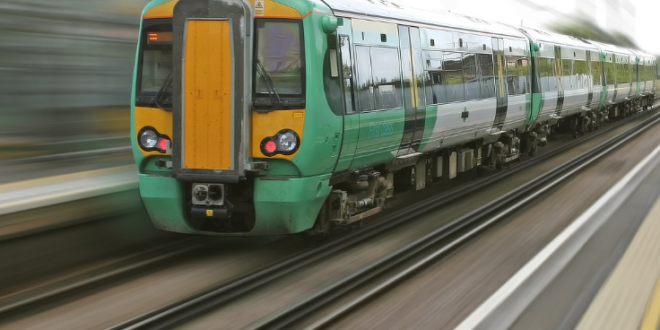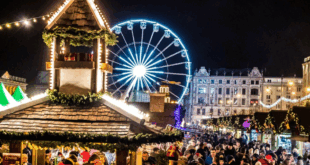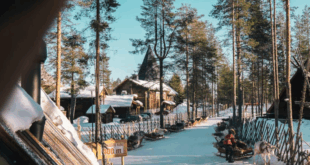Interrailing through Europe is one of the most exhilarating ways to experience the continent’s diverse cultures, stunning landscapes, and vibrant cities. With just one rail pass, you can hop on and off trains across multiple countries, making it a flexible and budget-friendly option for travelers. Whether you’re a first-time traveler or a seasoned explorer, interrailing offers an unforgettable adventure. Here’s everything you need to know about interrailing in Europe.
What is Interrailing?
Interrailing refers to traveling across Europe using an Interrail Pass, a rail pass that allows unlimited train travel in a specified number of countries for a certain period. The pass is available to European residents, while the Eurail Pass serves non-European residents. Both passes offer various options, from single-country passes to global passes covering 33 countries.
Why Choose Interrailing?
- Flexibility: One of the biggest advantages of interrailing is its flexibility. You can create your own itinerary, decide how long to stay in each place, and even change your plans on a whim. This makes it ideal for spontaneous travelers.
- Cost-Effective: For those planning to visit multiple countries, an Interrail Pass can be more economical than buying individual train tickets. It also often includes discounts on ferries, buses, and even accommodation.
- Environmental Impact: Train travel is one of the most eco-friendly modes of transportation. By choosing to interrail, you’re reducing your carbon footprint compared to flying or driving.
- Cultural Immersion: Trains often connect city centers, giving you direct access to the heart of each destination. You’ll experience Europe’s diverse cultures, languages, and cuisines more authentically than you would on a plane.
Planning Your Interrail Trip
1. Choose the Right Pass
Interrail offers a variety of passes to suit different travel styles and durations. The Global Pass is the most popular, allowing travel in 33 countries for periods ranging from 4 days to 3 months. If your focus is on a specific region or country, consider a One Country Pass.
2. Plan Your Route
While interrailing is flexible, it helps to have a rough itinerary. Decide on the countries or cities you absolutely want to visit and check train routes and schedules. Popular routes include:
- Western Europe: France, Spain, and Italy
- Central Europe: Germany, Austria, and Switzerland
- Eastern Europe: Poland, Hungary, and Romania
- Scandinavia: Sweden, Norway, and Denmark
Consider starting in a major city like Paris, Amsterdam, or Berlin, where train connections are plentiful.
3. Book Accommodations
Though you might be tempted to keep everything spontaneous, booking accommodations in advance, especially in popular cities during peak seasons, is advisable. Hostels, hotels, and even night trains (which allow you to sleep onboard) are common choices for interrailers.
4. Pack Smart
Traveling light is key. Bring essentials like a backpack, comfortable shoes, a travel adapter, and a good guidebook or app. European trains are generally safe, but a padlock for your bag and a money belt for your valuables are wise precautions.
Tips for a Smooth Interrail Experience
- Reserve Seats When Necessary: While many trains don’t require seat reservations, high-speed trains like the TGV (France) and AVE (Spain) often do. Check in advance to avoid surprises.
- Travel Off-Peak: Avoid the busiest travel times (usually mornings and late afternoons) to find seats and enjoy a more relaxed journey.
- Use Travel Apps: Apps like Rail Planner (which works offline) and Google Maps are invaluable for checking train schedules, routes, and finding your way around new cities.
- Stay Safe: Like any travel experience, staying aware of your surroundings, especially in crowded stations and on overnight trains, is essential. Keep your belongings close and be cautious of pickpockets.
- Interact with Locals: Don’t just stick to tourist areas. Venture into local neighborhoods, try regional foods, and converse with locals. This will enrich your travel experience and offer a deeper understanding of each culture.
Must-Visit Cities on Your Interrail Journey
- Paris, France: The City of Light is a must-see, offering iconic landmarks like the Eiffel Tower, the Louvre, and charming neighborhoods like Montmartre.
- Barcelona, Spain: Famous for its unique architecture by Antoni Gaudí, including the Sagrada Familia, and its lively beach scene.
- Rome, Italy: Step back in time as you explore the Colosseum, Vatican City, and the ancient ruins scattered throughout the city.
- Berlin, Germany: A city steeped in history, from the Berlin Wall to its vibrant arts scene and nightlife.
- Vienna, Austria: Known for its classical music heritage, stunning palaces, and rich café culture.
- Prague, Czech Republic: A fairy-tale city with a mix of Gothic, Baroque, and Renaissance architecture, along with a vibrant cultural scene.
- Budapest, Hungary: Famous for its thermal baths, stunning Danube River views, and historical sites like Buda Castle.
The Joy of Slow Travel
Interrailing isn’t just about getting from point A to point B. It’s about embracing the journey itself. The rolling landscapes of the Swiss Alps, the scenic coastlines of the Mediterranean, and the charming villages of the European countryside are just as much a part of the adventure as the destinations.
Whether you’re gazing out of the window at snow-capped mountains or chatting with fellow travelers, interrailing offers a unique perspective on Europe that no other form of travel can match.
Interrailing through Europe is an adventure of a lifetime. It’s an opportunity to explore the continent in a way that’s affordable, flexible, and immersive. With a little planning and an open mind, your interrail journey will be filled with unforgettable experiences, new friendships, and a deeper appreciation for Europe’s rich history and diverse cultures. So grab your pass, pack your bags, and set off on an adventure that you’ll remember forever.
 Travellers Club The Travellers Club, a free to join on-line club for everyone who loves to travel.
Travellers Club The Travellers Club, a free to join on-line club for everyone who loves to travel.









